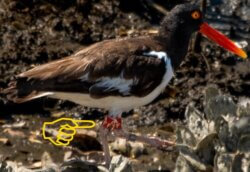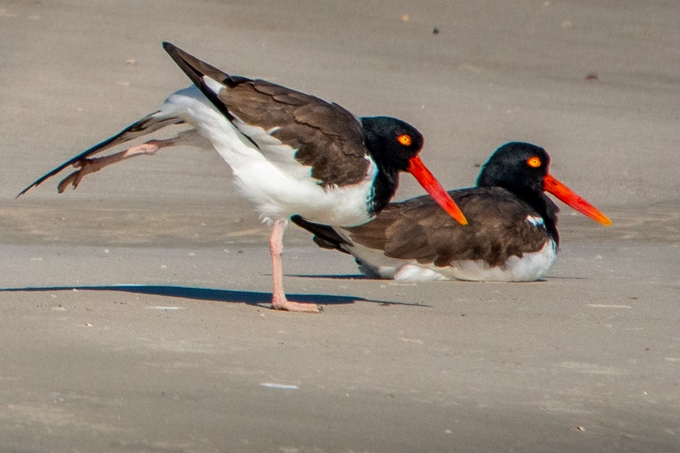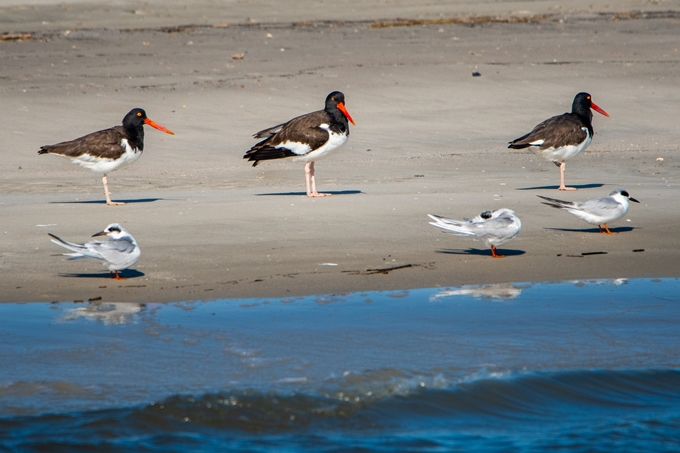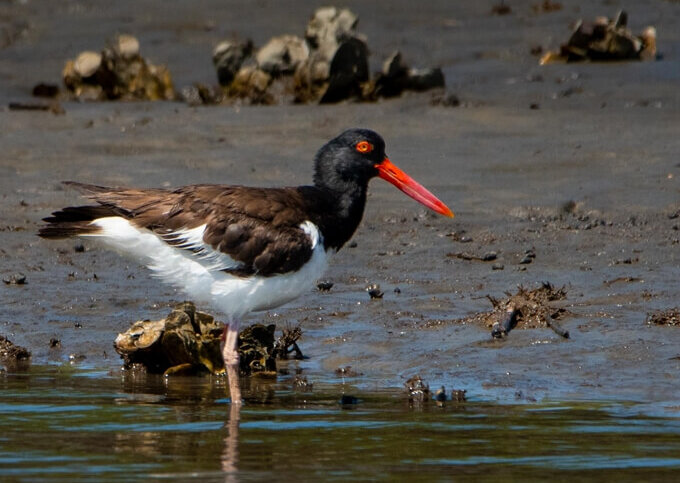
American Oystercatcher
July 28, 2022A common shorebird you may see on our narrated tours is the American Oystercatcher. This chunky bird is easy to spot with their bright orange bill. You can easily identify the juveniles as they have duller eyes and a darker tip on their beak. These are coastal birds who love large sandy beaches, and they often nest in the dunes well above the high tide mark. This is a large bird with a black head and neck, and a brown mantle with white underneath. This is one of several species identified in the US Shorebird Conservation Plan as having small enough populations to warrant special attention.
The Oystercatcher likes to feed on mussels, clams, oysters, sand crabs, worms and jellyfish. Meals are made easier by popping shells open with their strong beaks. They lay their first eggs, usually one to four, when they are 3 – 4 years old, and they often mate for life. In large populations, sometimes one male will mate with two females and their nest may have 5 – 6 eggs. Their eggs are grey with brown speckles.

So, the next time you take an Amelia Island River Cruise, make sure you bring along your camera, you may just spot one of these interesting shorebirds.
Tags: Wildlife
Categorised in: Wildlife & Marine Biology







